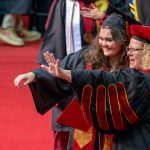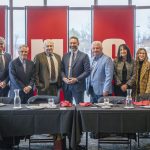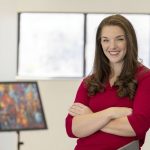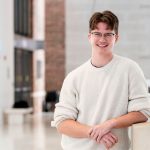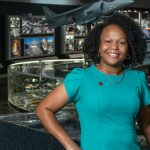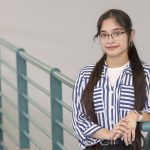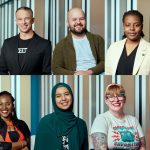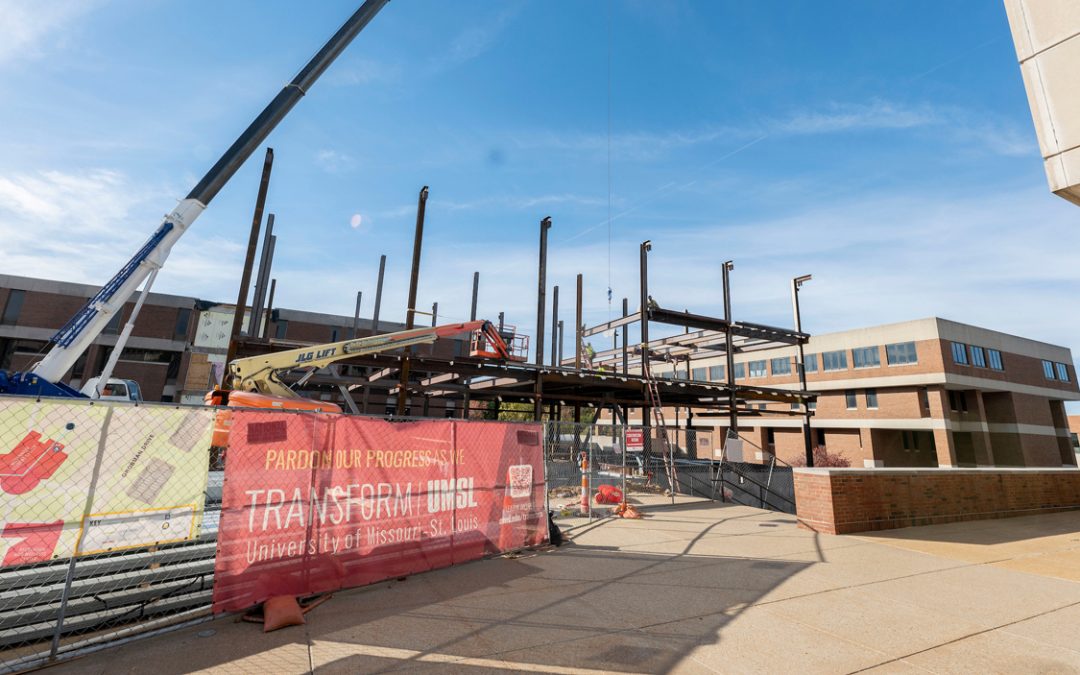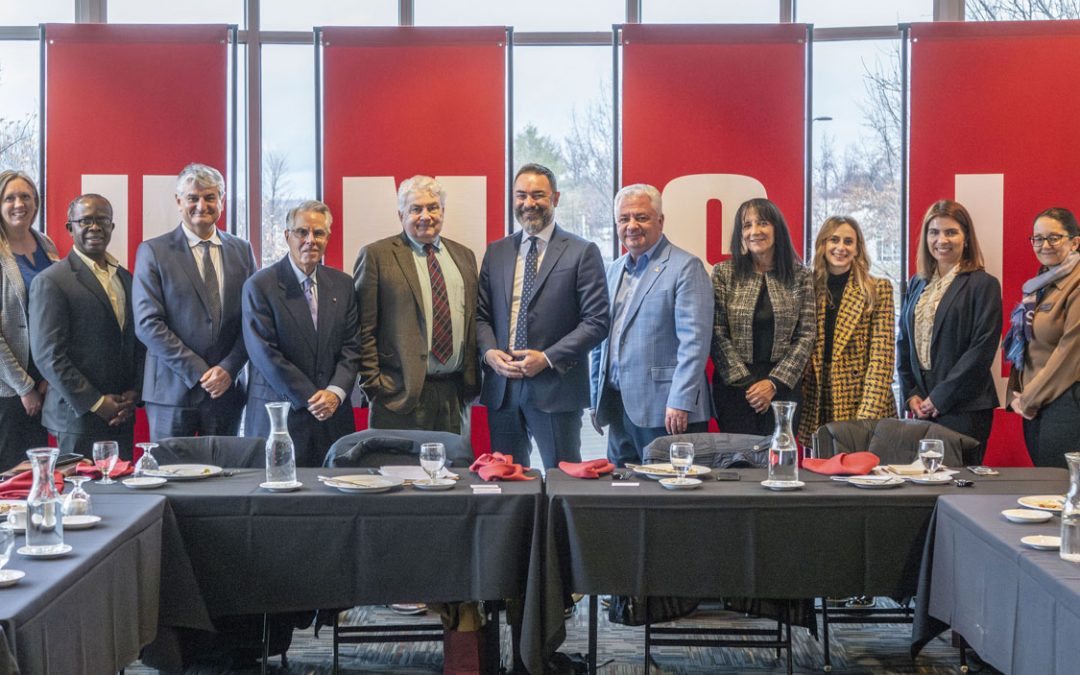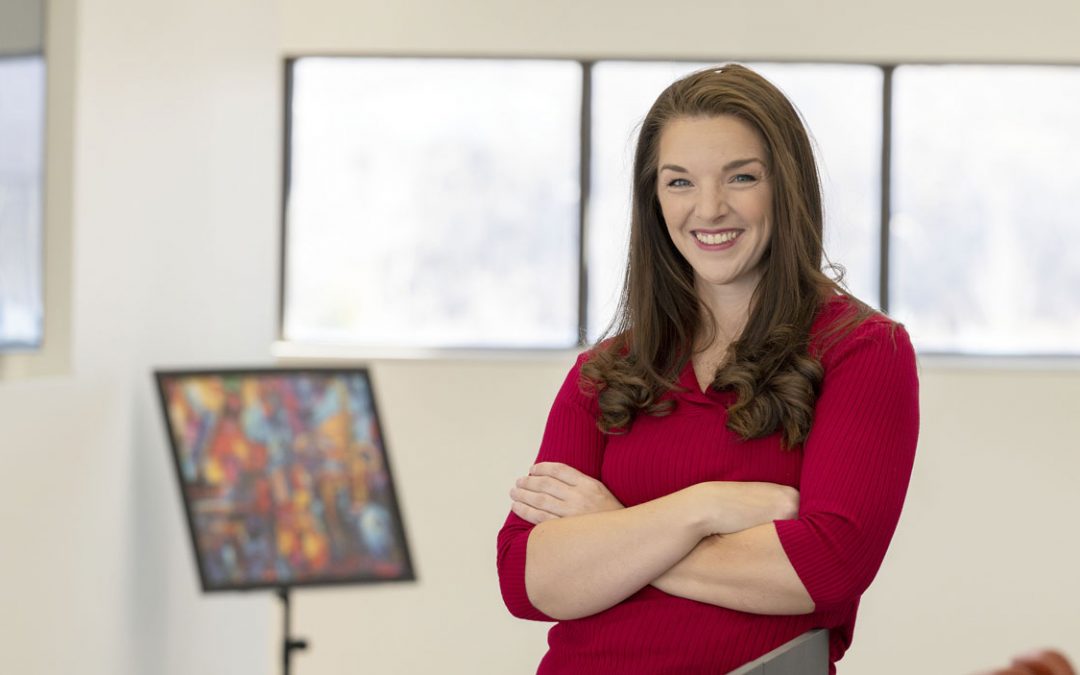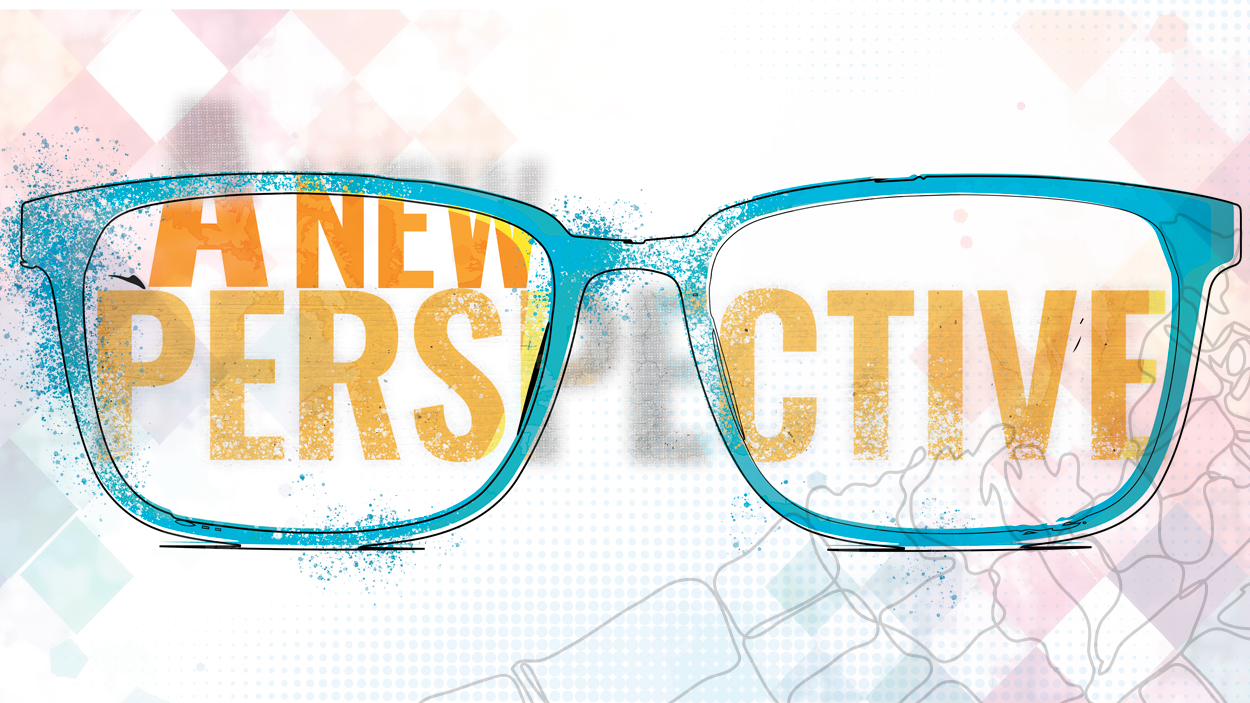
Illustration by Martin Baragiola
As William Sigmund began pointing out details on the trees outside the window, his 9-year-old patient slowly started to realize how much a pair of glasses could change his life. Sigmund, a fourth-year student in the University of Missouri–St. Louis College of Optometry, had just performed a refraction as part of an abbreviated eye exam at a summer camp in Fishkill, New York, and found the boy was nearsighted. While he had been able to read a book or look at a phone without a problem, anything in his distance was extremely blurry. Having never had an eye exam before, the boy hadn’t known what he was missing out on until that moment – and he was amazed.
But as Sigmund continued to explain to his patient how his vision would improve with his new glasses, he noticed the boy’s best friend – who hadn’t left his side during the exam – seemed a little confused. A previous exam had demonstrated that this boy had perfect eyesight, so he didn’t quite understand what his friend was now experiencing.
Sigmund grabbed a few other lenses and was able to mimic what the boy’s friend’s vision had been like without his new glasses. The look of understanding on the child’s face – and the compassion he showed for his friend – was priceless. Sigmund, who was initially a little overwhelmed by his first clinic trip with UMSL’s chapter of Student Volunteer Optometric Services to Humanity, found the experience touching, and it reminded him why he volunteered in the first place.
“As long as you can get the courage to take that leap into a new, scary but exciting opportunity, you can practice your skills and use it for something truly good by helping kids and adults get the care they need,” Sigmund says. “It’s a fantastic learning opportunity. You get to see so many patients, and a lot of these patients are people who are really, truly in need. Health care is for the patients, and this is a great way to get that care to the people who need it most, and in a way where they can actually access it.”
The Fishkill clinic was just one of several hosted in recent years by UMSL’s chapter of SVOSH, a volunteer organization that provides vision care to people in need. After a brief pause due to the COVID-19 pandemic, UMSL’s SVOSH chapter has gained momentum, now sending students to roughly 25 humanitarian clinics across the country each year. In recent years, students have traveled to elementary, middle and high schools as well as Native American reservations and refugee resettlement institutions in California, Florida, Michigan, Montana, New York, Missouri and Texas, among other states, to administer eye exams and prescribe glasses. Over the course of several days, they see an average of 500 to 1,000 patients, with a need rate for glasses typically around 90-95%.
In order to participate in an SVOSH trip, students must have first received their white coat and completed volunteer work in the local community. Alongside licensed optometrists in each state, they evaluate patients’ ocular health and prescribe glasses, which are typically cut and given to patients right on the spot.
While many universities offer service opportunities for students pursuing a career in health care, UMSL’s SVOSH chapter stands out because students pay nothing out of pocket to participate in these clinic trips – 100% of their travel, accommodations and food expenses are covered by OneSight EssilorLuxottica Foundation, the largest eye care nonprofit in the world. Dr. Tareq Nabhan, an assistant clinical professor in the College of Optometry and the faculty advisor to UMSL’s SVOSH chapter, helped formalize the relationship, as he was elected to the board of directors of VOSH International in 2022 and has an advisory role with OSELF. UMSL’s partnership with OSELF makes traveling to these humanitarian clinics a reality for students who otherwise might not have the means to afford it.
“There is almost no chance that I would be able to go on a trip like that if I had to come up with the funds myself,” says Sigmund, who served as SVOSH secretary last year. “We obviously have a lot of time dedicated to school, so there’s not a lot of time to have a job on the side. The Foundation pays for our flights, hotel, meals, so that us students can just go out there worry-free and provide the best care and get the best learning experience we can. That is an invaluable resource and something that I don’t take for granted. You get the opportunity to go help someone truly in need, and you don’t have to pay for any of those expenses.”
Hannah Bollig, a fourth-year optometry student who served as SVOSH president last year, has always been interested in humanitarian work and was drawn to the community-centered approach in the College of Optometry. As a full-time student and mom of two, she appreciated that the college offered ways to give back that wouldn’t be a financial burden on her family.
She had a particularly memorable experience during her first SVOSH trip to Detroit while working with a young patient with myopia, or nearsightedness, who received a new pair of glasses. About an hour after her exam with Bollig, the girl came back over to her station, covering her eyes. At first, Bollig was concerned something was wrong – until the girl, smiling from ear to ear, pulled her hands down for a peekaboo- style reveal of her new bright-pink frames.
“I just remember realizing how powerful a good set of glasses can be for somebody,” Bollig says. “It helped reground me as a practitioner. Someone I had just seen an hour before would already have their glasses on, and you get to see just how much you just impacted their life. We know in our heart if a patient is very nearsighted that that first pair of glasses is going to change their life, but when you actually get to see it, as the clinician, you also realize how powerful it is to give back and what you’re capable of. It works for everybody. It makes the community happy and stronger, and it makes you realize that you can make a difference.”
Volunteering their time during these trips leaves an indelible impact on students, many of whom continue to volunteer at clinics and engage in other humanitarian work after graduation. Current students have even requested that humanitarian work be embedded in the curriculum in the College of Optometry, and it’s also become one of the biggest draws in recruiting new students.
“There’s not one candidate who doesn’t ask about humanitarian opportunities to engage in the community,” Nabhan says.
During SVOSH clinics, students are able to apply what they’ve been learning in the classroom to real- life patients. Since students see a higher volume of patients than they would in a normal clinic – anywhere from 20 to 50 patients a day – they’re exposed to a wider demographic of patients, including some with rare conditions that they might previously have only read about in a textbook. These experiences shape them as practitioners, giving them confidence and a deeper understanding of the profession. Moreover, the clinics provide an immersive cultural experience serving to enhance their humility and understanding of the circumstances of their patients.
“The difference in me as a clinician from before I went on one of these trips to after is almost night and day,” Sigmund says. “It’s great to have the knowledge and the skills on paper and be able to perform those in front of a professor, but doing it with an actual patient is extremely different. You’re learning how to perform your skills more efficiently, and you get to take all that experience of the hundreds of patients you see in a week into your patient encounters back at school and in your career in the future.”
Nabhan feels strongly that, at an operational and proof-of- concept level, UMSL’s College of Optometry and OSELF have created a model for student engagement in humanitarianism that could scale to optometry schools across the country.
He envisions a partnership with the American Optometric Student Association in which all optometry schools in the U.S. are involved so that clinics in other states can build the local capacity of optometrists. The experience provides life-changing vision care to these communities, of course, but it also leaves a lasting impact on the students.
“These experiences can redefine optometry for a lot of people,” Nabhan says. “Some students may not be comfortable or familiar with what it’s like to do humanitarian work. But once they do it, it’s like a bug. Everyone wants to be part of it. From a pedagogical perspective, students are doing what they’re learning in the classroom in the field, and they’re also learning about the circumstances of the patients that we serve. A pair of quality glasses and proper eye care goes well beyond caring for our most precious sense. By improving eyesight, we also improve nearly every sustainable development goal by better understanding the social determinants of health many of our patients are challenged by, whether at UMSL or at a remote charitable humanitarian clinic for refugees. In the end, we help improve the sight of our patients, but we too are the beneficiaries of better vision. Humanitarian clinics humanize our experiences and our perception.”
This story was originally published in the spring 2025 issue of UMSL Magazine. If you have a story idea for UMSL Magazine, email magazine@umsl.edu.



